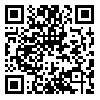BibTeX | RIS | EndNote | Medlars | ProCite | Reference Manager | RefWorks
Send citation to:
URL: http://jdisabilstud.org/article-1-1578-en.html
2- Science and Arts University
Background & Objectives: Entrance to university is associated with novel experiences, like communication with the purpose of new experiences, e.g., a relationship with the opposite gender. Moreover, being distanced from the family increases the occurrence of emotional needs and the probability of being involved in romantic relationships. During this period, the occurrence of the phenomenon called love, i.e., among the signs of dependence in any person is predictable. However, it is not the case for every amorous relationship to be successful, and those who experience romantic failure present various signs. For the first time, the signs of love shock include a set of severe signs, which occur, with the unsettlement of romantic relationships, and a decrease in self–esteem and emotional self–efficacy. To treat mental problems, which occur in individuals following failure in love, in addition to pharmacotherapy, there are various psychological treatments; among which is the cognitive–behavioural Treatment (CBT). Research about the effectiveness of CBT on outcomes caused by love failure is scarce. Furthermore, there is a high prevalence of romantic failure among the students, i.e., associated with undesirable outcomes (academic failure, self–esteem decrease, self–efficacy decrease, & even committing suicide), and damaged elegance in girls following these matters. Therefore, the present research aimed to explore effects of CBT on the self–esteem and self–efficacy of female students who had experienced love failure.
Methods: This was a quasi–experimental study with a pretest–posttest and a control group design. Ross’s Love Shock (1999), Rosenberg’s Self–Esteem (1965), and Kirk et al.’s Emotion (2008) questionnaires were applied for data collection. Then, the test group subjects were weekly involved in CBT for eight 2–hour sessions; however, the control group received no intervention. The above–mentioned questionnaires were completed in 2 stages; after the end of the CBT course, and three months after the last treatment session. To determine the normal distribution of the collected data Shapiro–Wilk test was implemented. Moreover, for analyzing the research findings, the Independent Samples t–test and repeated–measures Analysis of Variance (ANOVA) were applied using SPSS at a significance level of 0.05.
Results: The Shapiro–Wilk test data confirmed the normal distribution of data. The repeated–measures ANOVA data revealed that after the omission of the pretest effect on the dependent variables of self–esteem and emotional self–efficacy, there were significant differences in the self–esteem (p<0.001) and emotional self–efficacy (p<0.001) between the test and control groups.
Conclusion: According to this research, 8 sessions of CBT could increase self–esteem and emotional self–efficacy in females having love failure experiences. The main effective factor of CBT in the improvement of self–esteem and self–efficacy was the cognitive aspect of the treatment; it leads to a more effective cognition of behavioural and emotional variations in individuals. Besides, CBT could cause emotional and behavioural varieties in individuals. CBT could also improve self–esteem and emotional self–efficacy in those with emotional failure experience. This goal is achieved through the adjustment of ineffective cognitive characteristics, such as automatic thoughts, mediating beliefs, and fundamental beliefs, which cause deficiencies in self–esteem and self–efficacy. Therefore, CBT could improve happiness, the feeling of inner satisfaction, mental well–being, and life quality of those with the experience of romantic failure.
| Rights and permissions | |
 |
This work is licensed under a Creative Commons Attribution-NonCommercial 4.0 International License. |





